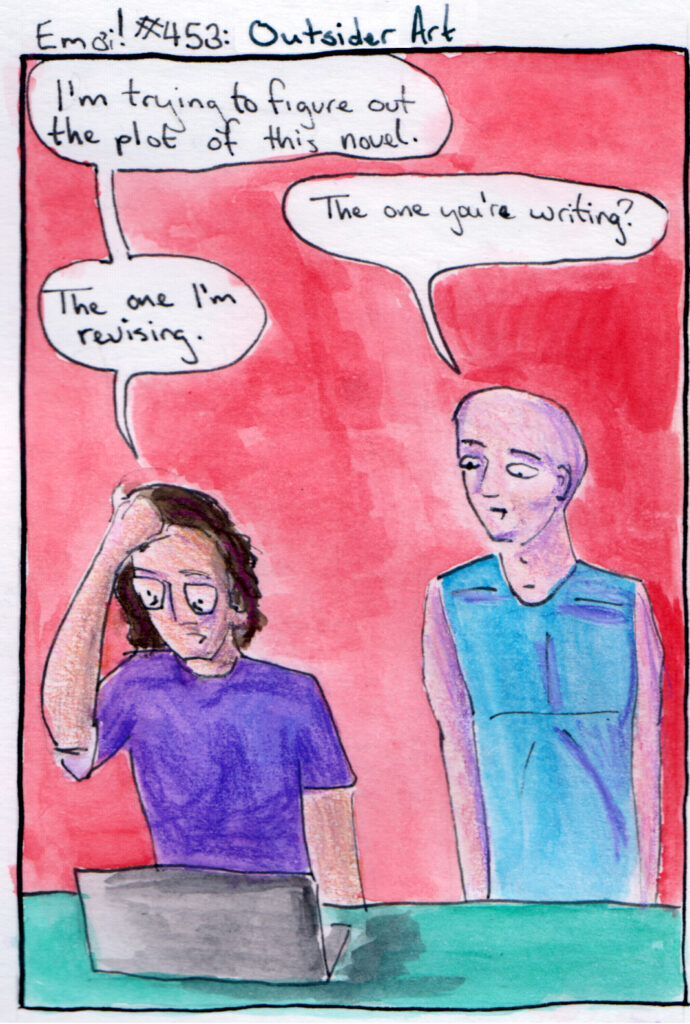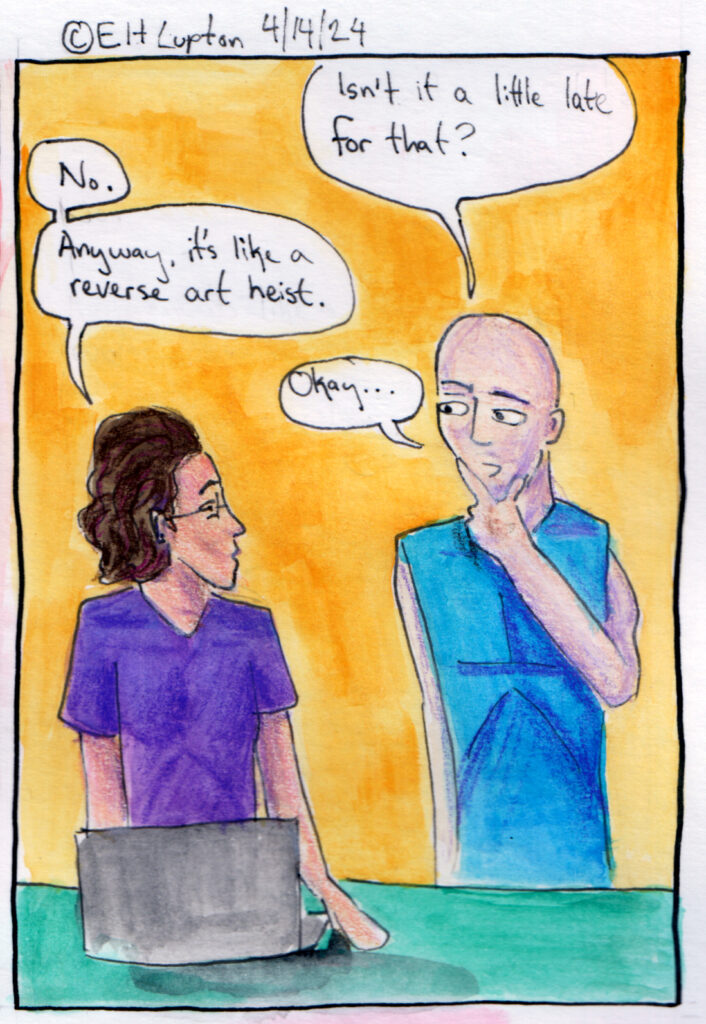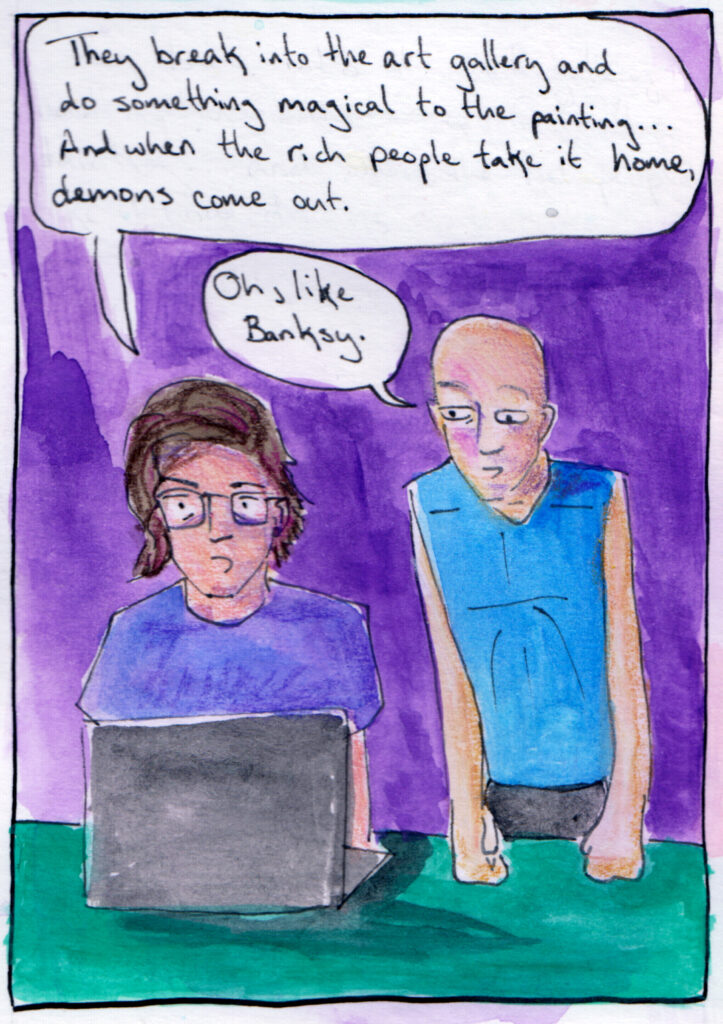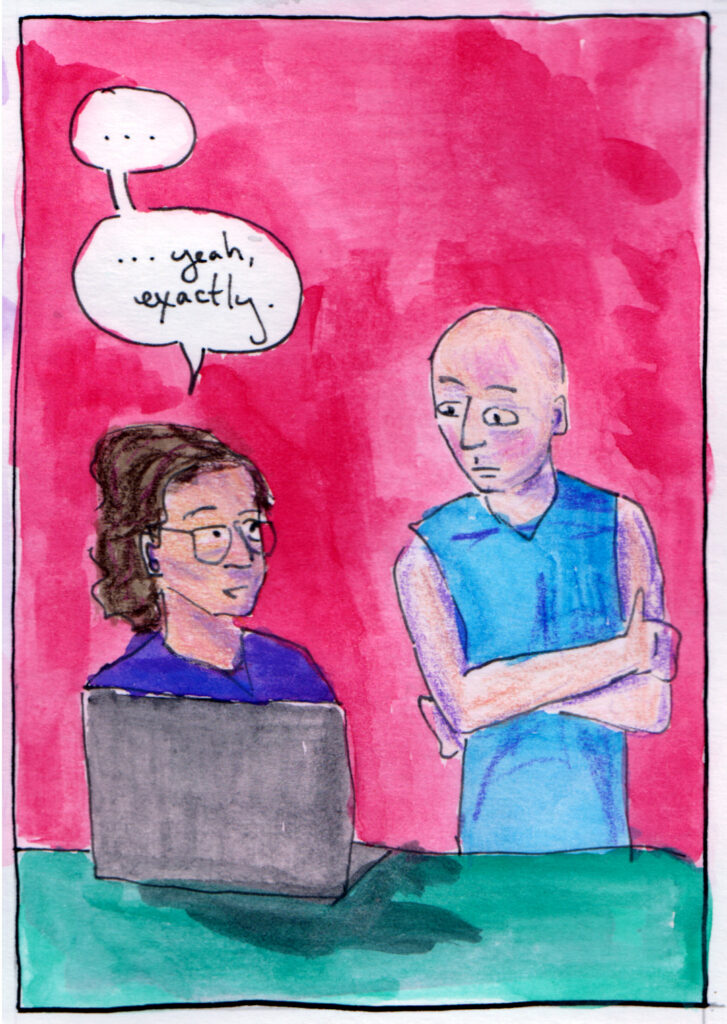



Technically, Banksy is regarded as a street artist or guerilla artist, although I’d argue that’s a subset of outsider artist. Outsider art is art created by people who are largely self-taught and exist outside of the conventions of the art world. That group, as you can imagine, is pretty broad, and includes “naive” artists (self-taught but want to be mainstream) like Henri Rousseau, mentally ill artists like Adolf Wölfli and Robert Gie, folk art, and, well, me, I guess.
Once, when I was in Baltimore, MD, before a marathon (I think it must have been the Marine Corps), I went to an exhibit of art created by mentally ill patients. Some of it was like a giant boat made of glued-together matchsticks. Some of it was like this: a self-portrait carved out of a single apple tree log by a man who had never shown any interest in art, then made this, then never made art again. It raises an interesting question of how the art-making process exists within a human. What, indeed, is art? Is art always intentional? Are we unfairly dividing art into two categories whereby one is the product of some sort of delusion or other uncontrolled mental process and the other is the result of specific creative direction? (Yes.) If someone writes novels compulsively to cope with stress, anxiety, or depression, is that essentially the same as building a giant boat out of matchsticks?
Anyway, before I veer off into fruitless discussions of Deleuze and Guattari, the comic. Over the last few books, I’ve developed a process, which includes: 1/ write a first draft. 2/ Revise to fix plot problems. 3/ Another draft to fix remaining plot holes and fancy language. 4/ Send book to editor and accept changes. 5/ Final draft to make the language as good as possible. So the book we’re talking about is currently in stage two. And B did, in his way, fix the plot. He probably doesn’t even know how.
I’m going to file this one under N8354 B3 L86 2024, for Visual Arts–Art as a profession. Artists.–Banksy.
